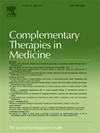干针技术可改善不同类型头痛患者的残疾和疼痛:系统回顾与元分析》。
IF 3.3
3区 医学
Q1 INTEGRATIVE & COMPLEMENTARY MEDICINE
引用次数: 0
摘要
背景:头痛是一种广泛存在的神经肌肉疾病,给个人和社会带来了沉重负担,需要药物和非药物干预。干针疗法(DN)已成为治疗头痛的一种显著的非药物疗法。我们旨在比较干针疗法与对照组对不同类型头痛的治疗效果:我们进行了一项全面的荟萃分析,对截至 2023 年 5 月的五个电子数据库进行了系统性探索,并使用 Cochrane 偏倚风险工具对研究的有效性进行了评估。符合条件的研究包括有对照组的研究,对照组可以是假干预、物理治疗或药物治疗。研究人员提取并分析了与残疾、头痛强度和频率相关的结果:在筛选出的 4304 项研究中,有 13 项随机对照试验(RCT)被纳入本系统综述,其中有 10 项 RCT 被纳入荟萃分析。与对照组相比,DN组的残疾评分和头痛强度在一个月和三个月的随访中明显下降。特别是在干预后的一个月和三个月,头痛频率明显降低:结论:干针疗法是一种有效的干预方法,可减轻头痛的强度和频率,但对残疾评分的影响较小。观察到的益处在一个月和三个月后尤为明显,但由于某些数据分析的不一致性,需要进一步开展详细研究,以便更清楚地了解干针疗法对评估结果的疗效。本文章由计算机程序翻译,如有差异,请以英文原文为准。
Dry needling techniques as a treatment for improving disability and pain in patients with different types of headache: A systematic review and meta-analysis
Background
Headaches, a widespread neuromuscular ailment, pose a significant burden on individuals and society, necessitating both pharmacological and non-pharmacological interventions. Dry needling (DN) has surfaced as a notable non-pharmacological alternative for addressing headaches. We aim to compare DN intervention with the control group in the management of different types of headaches.
Methods
A comprehensive meta-analysis was conducted, encompassing a systematic exploration of five electronic databases up to May 2023, with studies assessed for validity using the Cochrane risk of bias tool. Eligible studies included those with a control group, which could consist of sham interventions, physiotherapy, or pharmacological treatments. Outcomes related to disability, headache intensity, and frequency were extracted and analyzed.
Results
Out of 4304 studies screened, 13 randomized controlled trials (RCTs) were included in this systematic review, of them 10 RCTs were included in the meta-analysis. A significant decline in the disability score and headache intensity was evident in the DN group compared to the control group, one and three-month follow-ups. Specifically, substantial reductions in headache frequency were prominent after one and three months post-intervention.
Conclusion
Dry needling manifests as a potent intervention, diminishing headache intensity and frequency, albeit with lower impact on disability scores. The observed benefits were especially pronounced after one and three months, though the heterogeneous nature of some data analyses mandates further detailed studies to gain a clearer understanding of DN's efficacy on the assessed outcomes.
求助全文
通过发布文献求助,成功后即可免费获取论文全文。
去求助
来源期刊

Complementary therapies in medicine
医学-全科医学与补充医学
CiteScore
8.60
自引率
2.80%
发文量
101
审稿时长
112 days
期刊介绍:
Complementary Therapies in Medicine is an international, peer-reviewed journal that has considerable appeal to anyone who seeks objective and critical information on complementary therapies or who wishes to deepen their understanding of these approaches. It will be of particular interest to healthcare practitioners including family practitioners, complementary therapists, nurses, and physiotherapists; to academics including social scientists and CAM researchers; to healthcare managers; and to patients. Complementary Therapies in Medicine aims to publish valid, relevant and rigorous research and serious discussion articles with the main purpose of improving healthcare.
 求助内容:
求助内容: 应助结果提醒方式:
应助结果提醒方式:


